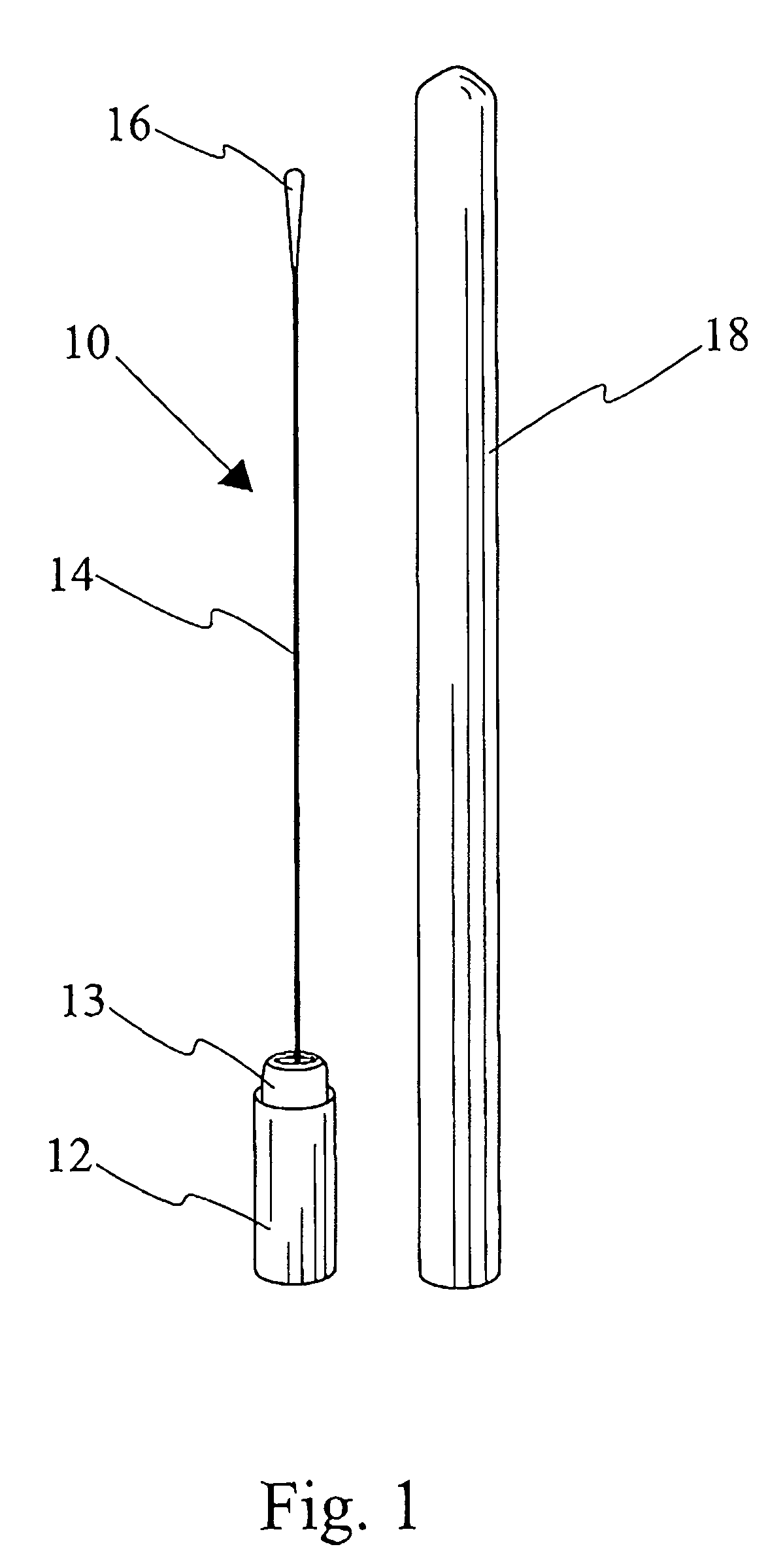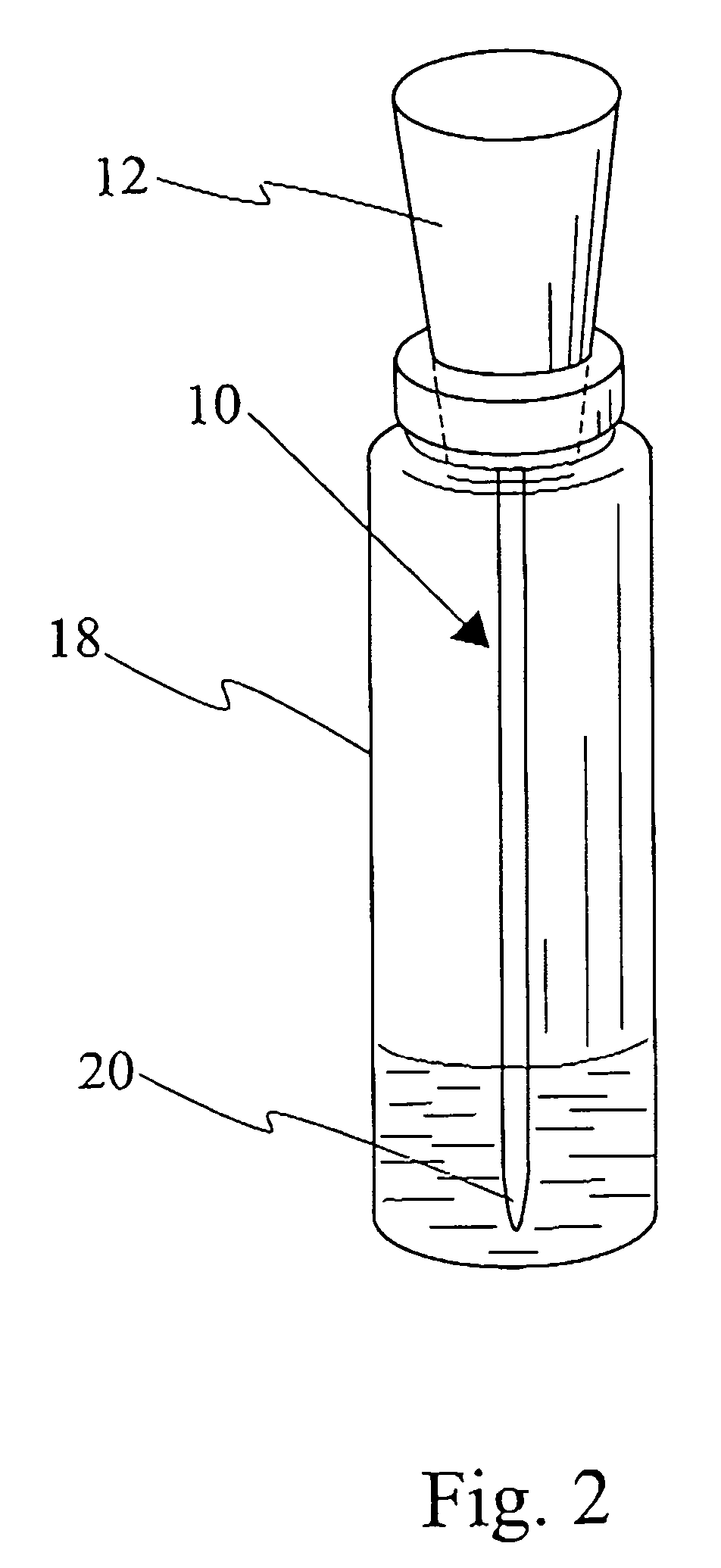Non-destructive method and test kit for the detection of infestation of live trees by invasive wood boring insect species
a test kit and non-destructive technology, applied in the field of non-destructive detection of live conifer trees by invasive wood boring insect species, can solve the problems of false negative, particularly challenging, and false negativ
- Summary
- Abstract
- Description
- Claims
- Application Information
AI Technical Summary
Benefits of technology
Problems solved by technology
Method used
Image
Examples
Embodiment Construction
Materials and Methods:
[0030] In one embodiment the test kit includes an elongated probe, provided in a pre-sterilized unit with a thin handle and a pre-moistened tip which is secured in a receptacle containing a fungus friendly medium to maintain viability of the fungus. This provides a reliable delivery system for the optimum collection of viable fungal spores while minimizing the risk of contamination, which is inherent to culturing in the field. The lightweight, readily hand portable device, once removed from its receptacle, can be gripped in one hand and readily inserted in the insect exit hole. Following the orientation of the exit tunnel in the wood, the probe will slide along until the tip makes contact directly with the pupal cell and / or its juncture with the exit tunnel. The probe, bearing viable fungal spores at its tip, is easily retracted, returned to its receptacle, and is ready for transport to the lab for culturing and growth on a selective, nutrient rich medium app...
PUM
| Property | Measurement | Unit |
|---|---|---|
| diameters | aaaaa | aaaaa |
| diameters | aaaaa | aaaaa |
| depth | aaaaa | aaaaa |
Abstract
Description
Claims
Application Information
 Login to View More
Login to View More - R&D
- Intellectual Property
- Life Sciences
- Materials
- Tech Scout
- Unparalleled Data Quality
- Higher Quality Content
- 60% Fewer Hallucinations
Browse by: Latest US Patents, China's latest patents, Technical Efficacy Thesaurus, Application Domain, Technology Topic, Popular Technical Reports.
© 2025 PatSnap. All rights reserved.Legal|Privacy policy|Modern Slavery Act Transparency Statement|Sitemap|About US| Contact US: help@patsnap.com


